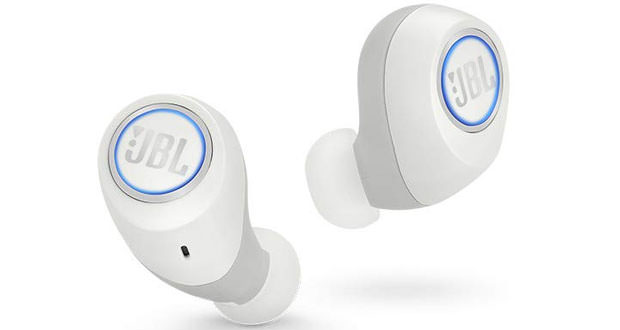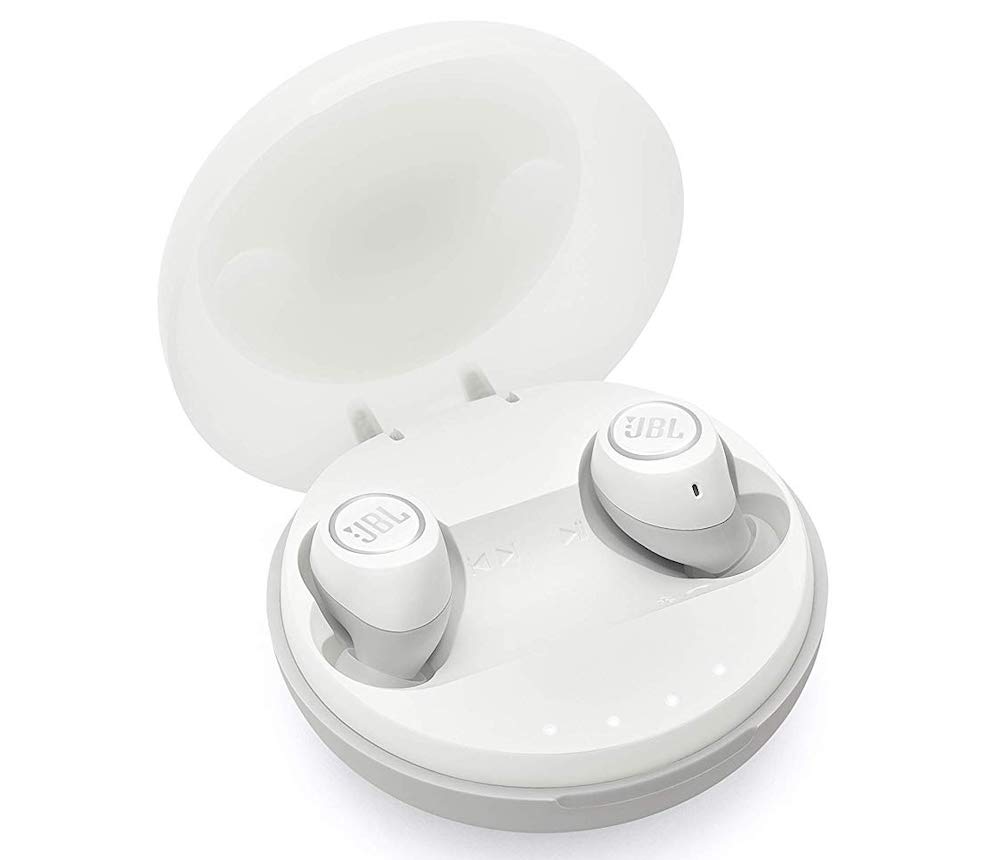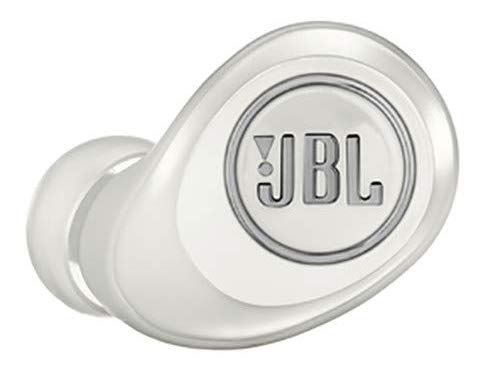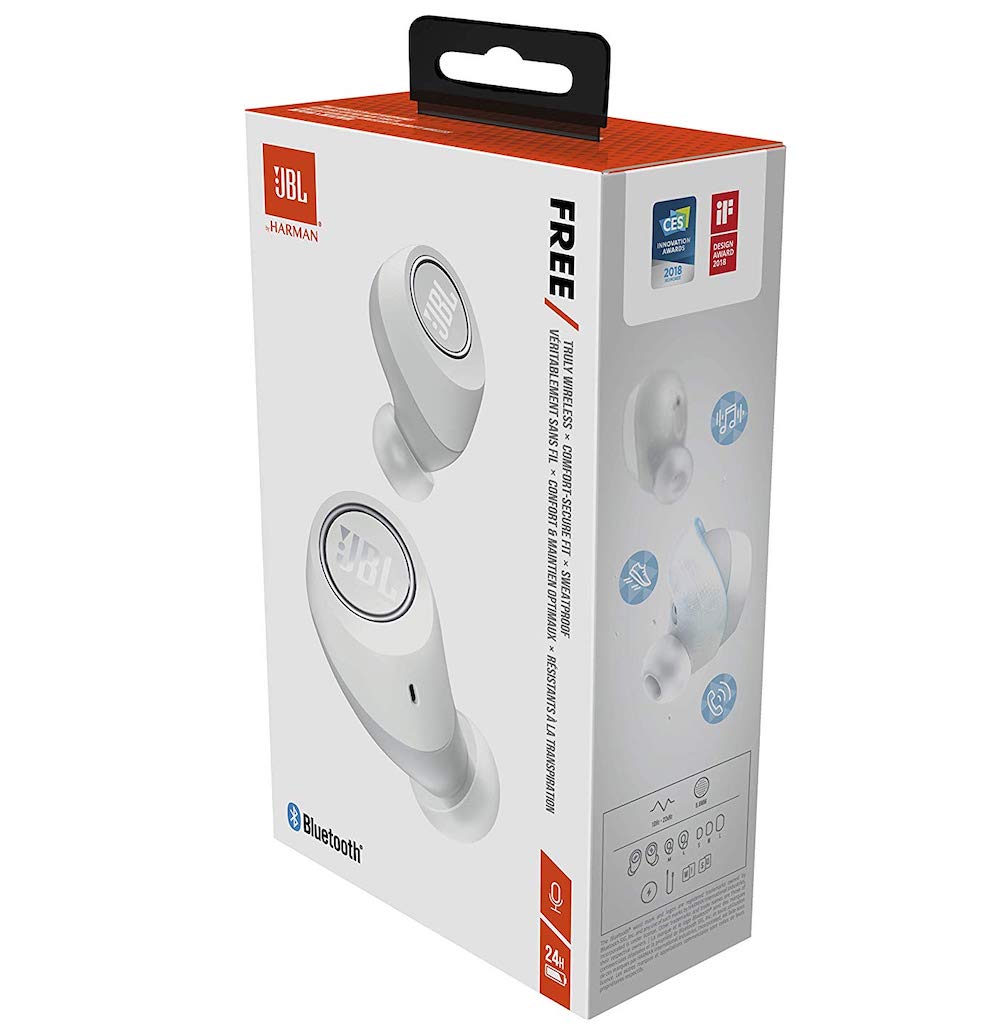JBL Free X: Sports True Wireless Earphones
These are earphones designed for ‘active’ users with IPX5 certification, which guarantees the use even with adverse weather and sweat resistance. In the pack the user finds three types of silicone olives, but also two linings of the same material for the body of the earphones: these shells allow you to adjust the bulk in the ear and find a fit that combines comfort and stability. Good sound, but not exceptional.
This is definitely a trendy object, now present in the ranges of all brands, whether they come from the world of audio or those that have recently established themselves in the world of telephony. I speak of the ” True Wireless ” headphones, evolution of the classic Bluetooth wireless headphones, but that besides having eliminated the cable that connects them to the smartphone (or tablet or PMP reader or laptop PC), they have also got rid of the connection between the two earphones themselves.
Comfort is that of listening to music and following your favorite series on headphones without the hassle of wires that, especially on the move, have the nasty habit of hooking up to bags, backpacks and so on. Among the products we reviewed, we recently found the 1More Stylish True Wireless and the Pamu Slide.
In the past few days, then, Sony has launched the third generation of its TWS with noise cancellation, but they are positioned around $250. It is a product category that has existed for some time, but which has seen its consecration to the general public with the launch of Apple’s AirPods. In the wake of the Cupertino house, all the mobile phone manufacturers then came up with their own interpretation and several more historic brands in the audio world.
Speaking of historical audio brands and brands that have become world-famous thanks to mobile phones, the product I am talking about today comes from a hybrid situation. The brand that bears imprinted is that of JBL, a company that has its roots in the United States after the war and that still bears the initials of the founder James Bullough Lansing, but, which later became the property of Harman, which in turn today is controlled by the electronics giant Samsung.
Today, the Korean company is actively fishing Harman Kardon / JBL for its audio products, but it continues to bring its brands to life. Given the circumstances, a lot is expected of a product like JBL Free X. So let’s see how they behave in practice.
These are earphones designed for active users with IPX5 certification, which guarantees the use even with adverse weather and sweat resistance. In this regard, the user can find three types of silicone olives in the package, but also two linings of the same material for the earphone body: these shells allow you to adjust the bulk in the ear and find a fit that combines comfort and stability.
The solution is interesting, but other designs (such as those in the reviews mentioned above) have proven to work better under both points of view. I tend to lose the earphones from the ears I opted for a solution that preferred stability using the thicker silicone shell.
The headphones have shown stability around the sufficiency indicating a bit of annoyance in the long run. The battery built into the 85 mAh earphones guarantees about 4 hours of battery life and the case with magnetic coupling offers an additional 1,500 mAh for a total autonomy of about 24 hours.
The data is certainly interesting, but the specimen under test did record a really excessive self-discharge rate. Theoretically, when they are placed, the earphones turn off and recharge, but leaving the case charged at rest for some time, I happened to find the system completely discharged more than once. Charging takes place via Micro-USB connector.
The earphones have a very simple body, characterized by a single physical button of generous size, with concentric LEDs. The keys allow the management of audio tracks and calls, but not of volume. It disappoints (at least as far as I’m concerned) that calls are made in Mono mode, only on the right earpiece. Among the important shortcomings, there is also support for the low latency AptX codec, which makes the headphones good for music and videos, but not suitable for videogame use.
The soundstage, which does not seem to be in-ear earphones, and the presence of bass, is positively striking from the first use. The headphones convincingly reproduce the lower frequencies, with a very substantial and never distorted response, in line with the style of JBL products.
With tracks that are not too complex JBL Free offer a pleasant enough listening, even if they lack a bit of detail, but on the other hand, it is perhaps not the aspect to look for in wireless headphones. The behavior on the more complex tracks could be better: when the rock gets bad and goes metal in the headphones the clarity loses and indeed sometimes they give the impression of lending the side to the distortion.
In summary, I was expecting something more from these JBL Free X, but a consideration must be made about the price. They have a list of $149.95, which would be excessive, they can instead have their say in the midst of the plethora of Chinese products that flood e-commerce.
The fact of being able to wear them even during physical activity, with the possibility of adapting them through the silicone shells can be an important feature for those who are perhaps already JBL customers but are looking for a new pair of earphones to be used outdoors by to add to the other products, perhaps more dedicated to listening up.
Product prices and availability are subject to change. Any price and availablility information displayed on Amazon at the time of purchase will apply to the purchase of any products.




